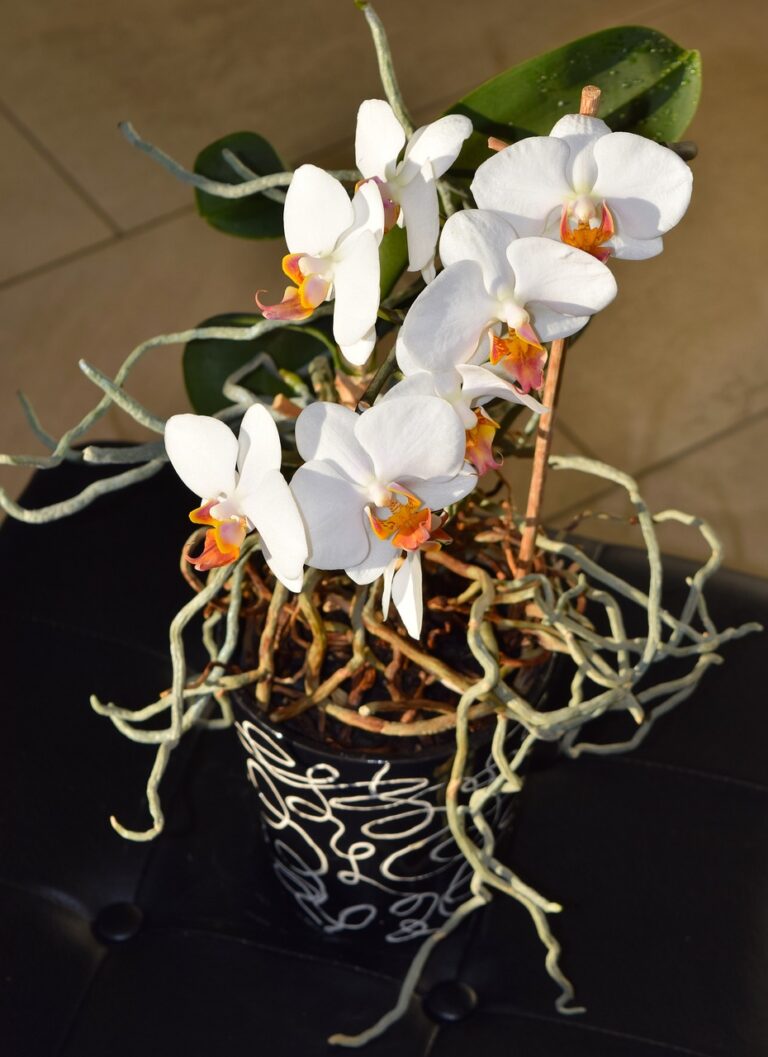Do you know how to prune your African violet flowers? Pruning is essential to African violet care because it aims to help your plant grow stronger and healthier. Pruning involves removing extra, dead, or damaged leaves from the plant. Removing dead or damaged leaves and flowers can stimulate new growth and prevent the disease from spreading.
Before you start pruning, you should know which parts require removing. African violets are delicate plants, and they require careful attention to detail. Only prune when necessary; never remove more than one-third of the plant.
So, how can you prune African violet flowers? When pruning African violet flowers, you must remove dead or damaged leaves or flowers. Other than that, you also need to remove any suckers or runners growing from the base of the plant.
You can prune the plant using a pruning knife or pinching back the tips of the stems to encourage branching and promote a fuller, more compact growth habit.
Why Prune African Violet Flowers?
Pruning African violet flowers helps the plant maintain its health and beauty. Removing the extra leaves and stems encourages new growth and promotes a more compact, bushy plant. Here are some reasons why you should consider pruning your African violet flowers:
Promotes Growth
Pruning your African violet flowers can help stimulate new growth and keep the plant looking full and healthy. Removing spent blooms and damaged leaves allows the plant to redirect its energy toward producing new leaves and flowers.
Encourages More Blooms
Pruning can also help encourage your African violet to produce more blooms. Old blooms tend to use more energy to grow. Cutting them allows the plant to focus on producing new buds and flowers.
Prevents Diseases
You can prevent the spread of diseases by pruning dead or affected leaves. Once you remove these leaves, you prevent the diseases from spreading to other parts of the plant. If you don’t remove the affected leaves, the disease will spread to the whole, which can lead to the plant’s death. Also, by pruning away dead or dying foliage, you can improve air circulation around the plant, which can help prevent the growth of mold and other harmful organisms.
When to Prune African Violet Flowers
African violets are a popular indoor plant that can bloom year-round. Knowing when to prune African violet flowers is crucial to the plant’s success. Here are some guidelines to help you determine when to prune your African violet flowers.
After Blooming
After your African violet has finished blooming, you can prune the spent flowers to encourage new growth. This will also prevent the plant from putting energy into producing seeds. To do this, simply remove the flower stem by cutting it off at the base of the plant. This will encourage the plant to produce more blooms in the future.
When the Plant is Dormant
African violets may go dormant during winter, which is a good time to prune them. Pruning during dormancy will help the plant conserve energy and promote new growth in the spring. During dormancy, remove any dead or yellowing leaves and any leggy stems.
When the Plant is Overgrown
If your African violet has become overgrown, pruning can help rejuvenate the plant. Overgrown plants can become leggy and produce fewer blooms. To prune an overgrown plant, remove any stems that are growing too tall or blocking light from reaching the lower leaves. This will encourage new growth and help the plant produce more blooms.
How to prune African Violet Flowers.
Tools needed
When pruning African violet flowers, it is important to use the right tools to ensure you make clean and precise cuts that won’t damage the plant. Here are some tools that are commonly used when pruning African violet flowers:
- Sharp, clean scissors: Use a pair of sharp, clean scissors to prune African violet flowers. Avoid dull or dirty scissors, which can crush or tear the plant tissue and increase the risk of infection.
- Tweezers or fine-tipped scissors: Tweezers or fine-tipped scissors can help remove dead or damaged leaves and flowers that are difficult to reach with regular scissors.
- Pruning shears: Pruning shears may be necessary if your African violet has grown to a large size and needs a more significant trim. These are similar to scissors but have longer, stronger blades that can handle thicker stems.
- Rubbing alcohol: Before and after pruning, it is a good idea to clean your tools with rubbing alcohol to disinfect them and prevent the spread of any potential plant diseases.
Pruning method
Here is a step-by-step process that you can use to prune African violet flowers correctly;
- Choose the right time: It’s best to prune African violet flowers after blooming. This allows the plant to recover before the next blooming cycle.
- Identify which flowers to prune: Look for flowers that have finished blooming, are wilted, or have dead or yellow leaves. These are the flowers that you should prune.
- Prepare your tools: Ensure your scissors or pruning shears are sharp and clean. You can also use rubbing alcohol to disinfect them.
- Cut the stem: Use your scissors or pruning shears to cut the stem of the flower just above the first set of healthy leaves. This will help encourage new growth and additional blooms.
- Remove dead leaves: Use your tweezers or fine-tipped scissors to remove any dead or yellow leaves from the plant. This will help keep the plant healthy and free from disease.
- Clean up: Once you have finished pruning, clean up any debris around the plant to prevent the growth of mold or mildew.
- Water and fertilize: After pruning, make sure to give your African violet plenty of water and fertilizer to help it recover and encourage new growth.
Tips for pruning African violet flowers.
Now that you know how to prune the plant, you might still make some mistakes, such as over-pruning. Such mistakes are not easy to identify. That’s why we are giving you these tips to follow when pruning to ensure that you come out winning.
Here are the tips to follow:
Avoid over pruning
Over-pruning involves removing excess leaves that it is required when pruning. Removing too many leaves or flowers can cause the plant stress, inhibiting its growth.
When you prune an African violet, you want to remove just enough dead or damaged leaves and flowers to promote new growth and encourage the plant to produce more blooms. If you remove too much, you risk damaging the plant and reducing its overall health and vitality.
Sanitize your tools.
Clean tools are important when pruning because they prevent the spreading of diseases and infections. Plants can be susceptible to diseases, and using dirty or contaminated tools can introduce pathogens to your African violet, potentially causing serious damage to the plant.
Ensure you clean and disinfect the pruning tools before and after using them on every plant. Use rubbing alcohol to disinfect the tools.
Observe the plant’s growth pattern.
Knowing the growth pattern of your plant can help you understand how it grows and how to prune it effectively.
Observe where new growth emerges from, how the leaves are arranged, and how the plant responds to different environmental conditions. Once you determine these factors, you can identify which parts of the plant need to be pruned and how to prune them to promote healthy growth and flowering.
For example, if your African violet grows tall and leggy, you may need to prune the stems to promote fuller growth and more compact foliage. Alternatively, if the plant produces fewer flowers than usual, you may need to prune the spent flowers to encourage the plant to produce more blooms.
Avoid damaging the crown.
The crown is the area where the leaves and stem meet, and it is responsible for producing new growth and blooms. If the crown is damaged during pruning, it can disrupt the plant’s ability to produce new growth and flowers, and in some cases, it can even kill the plant.
When pruning an African violet, it’s best to use sharp, clean scissors or shears and make clean cuts just above the base of the stem.
Remove the whole stem.
Remove the entire stem when pruning an African violet rather than just cutting it back partway. Leaving part of the stem behind can create an entry point for disease or insects.
Also, removing the entire stem prevents the spread of diseases. If the stem is infected with a fungus or bacteria, leaving part of it behind can allow the infection to continue spreading, potentially causing serious damage to the plant.



